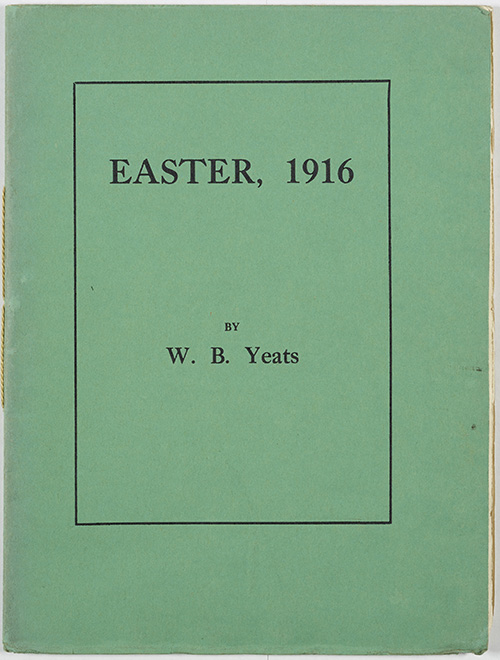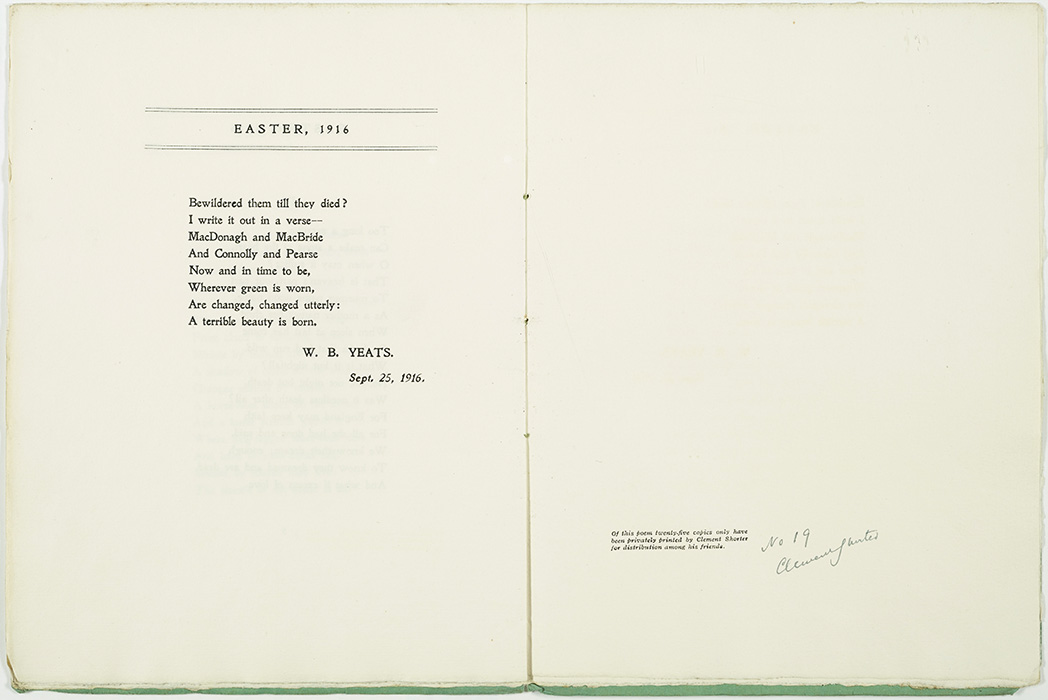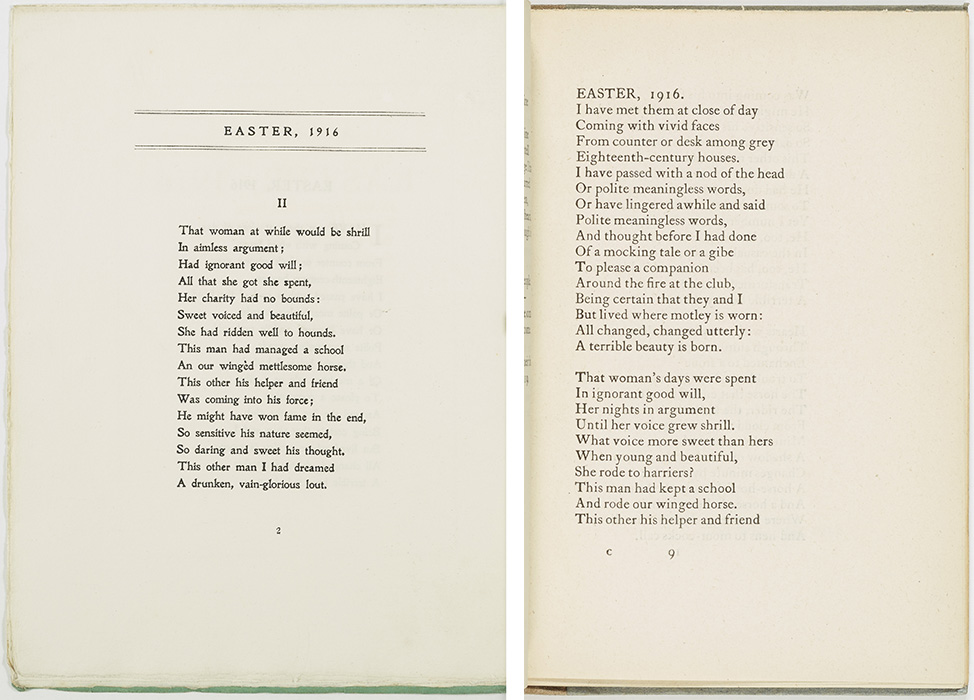
One hundred years ago on Easter Monday (April 24, 1916), members of the Irish Volunteers and the Irish Citizen Army occupied the General Post Office in Dublin. Upwards of 2,000 Irish men and women participated in the Rising.
On the first day of the insurrection, Pádraic Pearse read aloud the Proclamation of the Republic, which stated, “We declare the right of the people of Ireland to the ownership of Ireland and to the unfettered control of Irish destinies, to be sovereign and indefeasible.”
After six days of fighting against the British Army, the leaders of the Rising surrendered. The seven signatories of the Proclamation, along with nine others who participated in leading the rebellion, were executed.
W. B. Yeats began writing “Easter, 1916” during the last of the executions. According to George Mayhew, the final drafts were completed while Yeats stayed in France with his long-time muse, Maud Gonne, and her daughter Iseult. Gonne’s estranged husband, John MacBride, was one of the executed leaders of the Rising. His death prompted Yeats to propose marriage for the second time to Gonne and then to her daughter; both women rejected him.

Easter, 1916 was privately printed by Clement Shorter in a run of 25 copies for distribution among Yeats’s friends, likely in October or November of 1916. The copy above, held at the University of North Carolina, is numbered 19.
In the poem Yeats struggles with the personal and political complexities of the Rising, and the difficulties of grappling with these within a memorial poem. Gonne wrote to Yeats: “No, I don’t like your poem, it isn’t worthy of you & above all isn’t worthy of the subject.” Today it is the most remembered and read poem of the Easter Rising, particularly for Yeats’s refrain, “A terrible beauty is born.”
“Easter 1916” wasn’t distributed widely until it was printed in The New Statesman October 23, 1920, and then in Yeats’s 1921 volume of poetry, Michael Robartes and the Dancer. The 1916 version reveals its differences upon comparison to the 1921 version.


